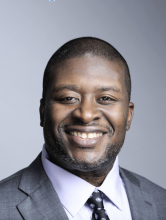Matthew Gonzales and Pharoah Cranston
To launch the Real Integration Hub, NYU Metro Center partnered with Territorial Empathy, a nonprofit design collective working to create “...thriving, resilient places…[that] address the plight of their most vulnerable residents–women, children, and the displaced.’’ The Real Integration Hub is an online digital tool that offers users the opportunity to contextualize and recommence the movement for desegregated and integrated schools.
This interactive hub is meant to preserve and archive the tools, resources, and policies achieved in the fight for integrated schools over the past 8 years. At the start of the de Blasio administration, fewer than a handful of schools used an admissions policy that considered diversity as a priority. There was no systemic approach to addressing or even acknowledging the deeply entrenched segregation in NYC schools. Mayor de Blasio and his team famously refused to use the word segregation to describe the system. Despite his intransigence, a coalition of students, parents, educators, elected officials, and community members continued to put pressure on the administration, forcing the city to take meaningful action. Today, there are over 200 schools using some form of diversity or desegregation admissions policy and three community school districts (CSDs) that have implemented district-wide diversity plans.
The city began taking action at individual schools using the Diversity in Admissions policy beginning with seven schools in 2015. In 2017, the city released its first Diversity Plan, which outlined a handful of policy priorities, and also established the School Diversity Advisory Group (SDAG), a body that would continue the work. In 2019, the SDAG released two reports calling for sweeping changes to many of the city’s policies, with a focus on admissions, but through a comprehensive policy framework. The Mayor and then Chancellor Richard A. Carranza agreed to 62 of 67 of the first set of recommendations, and zero of the recommendations outlined in the second report.
The Real Integration Hub situates the work to integrate NYC schools, by not only providing historical context for this vital, equity-championing movement, but also constituting an appreciable frame of reference for the long storied, and continuing battle for racial justice in New York City.
Nearly 70 years after the landmark U.S. Supreme Court ruling in Brown v. Board of Education of Topeka, Kansas, which ruled that state laws establishing racial segregation in public schools are unconstitutional, segregation in public schools remains a prevalent issue throughout the country. Rural and urban school districts across the United States remain highly segregated by race, ethnicity, and economic status, including New York City, which remains one of the most segregated public school systems in the country. Despite a nearly 2 centuries long struggle for integrated schools amongst concerned New York City families, communities, and advocates.
The movement for New York City school integration is an equity, justice, and social transformation campaign that has actively contested the status quo of educational segregation in NYC schools for over 150 years. Prior to the Supreme Court decision in the Brown case in 1954, there was a great deal of activism being led particularly by Black women in New York City, and across the country. In New York City, parents and activists like Elizabeth Cisco who brought a court case against the School Board of Queens, and Ella Baker who moved to Harlem in the 1930’s to help lead a grassroots movement for desegregation in city schools.
The Real Integration Hub launches at a critical time in the history of NYC's school integration efforts. Since last year, there has been a 7.5% enrollment drop in Black students, 8% drop in students with disabilities, and of all the students that have left the system, two-thirds are low income. As of today, 104,000 NYCDOE students are unhoused. Unfortunately, the current administration has decided this post coronavirus pandemic peak crisis period is an opportune time to roll back diversity initiatives.
In the wake of a new Mayoral administration who has chosen to reverse course on many admissions policies meant to increase access and diversity across New York City schools, The Real Integration Hub is meant to preserve and archive the tools, resources, and policies achieved in the fight for integrated schools.
“We are proud to launch the Real Integration Hub for New York City. We hope students, parents, educators, and those interested in fighting for school integration use this resource to further their knowledge on the topic, identify resources and tools to help them navigate their local fights for equity and integration. This is a living resource and hopefully, a place to find community. Please share with your community, and connect with the organizations in our network to support the movement. We look forward to continuing to build it together.” – Matt Gonzales, Director of Education Justice Research and Organizing Collaborative (EJ-ROC).
Despite a retreat from the current administration on fighting for integrated schools, our commitment to uplifting the voices and priorities will remain. We, NYU Metro Center and Territorial Empathy, are proud to share this work with the community and hope it continues to be a hub for the school integration community.


